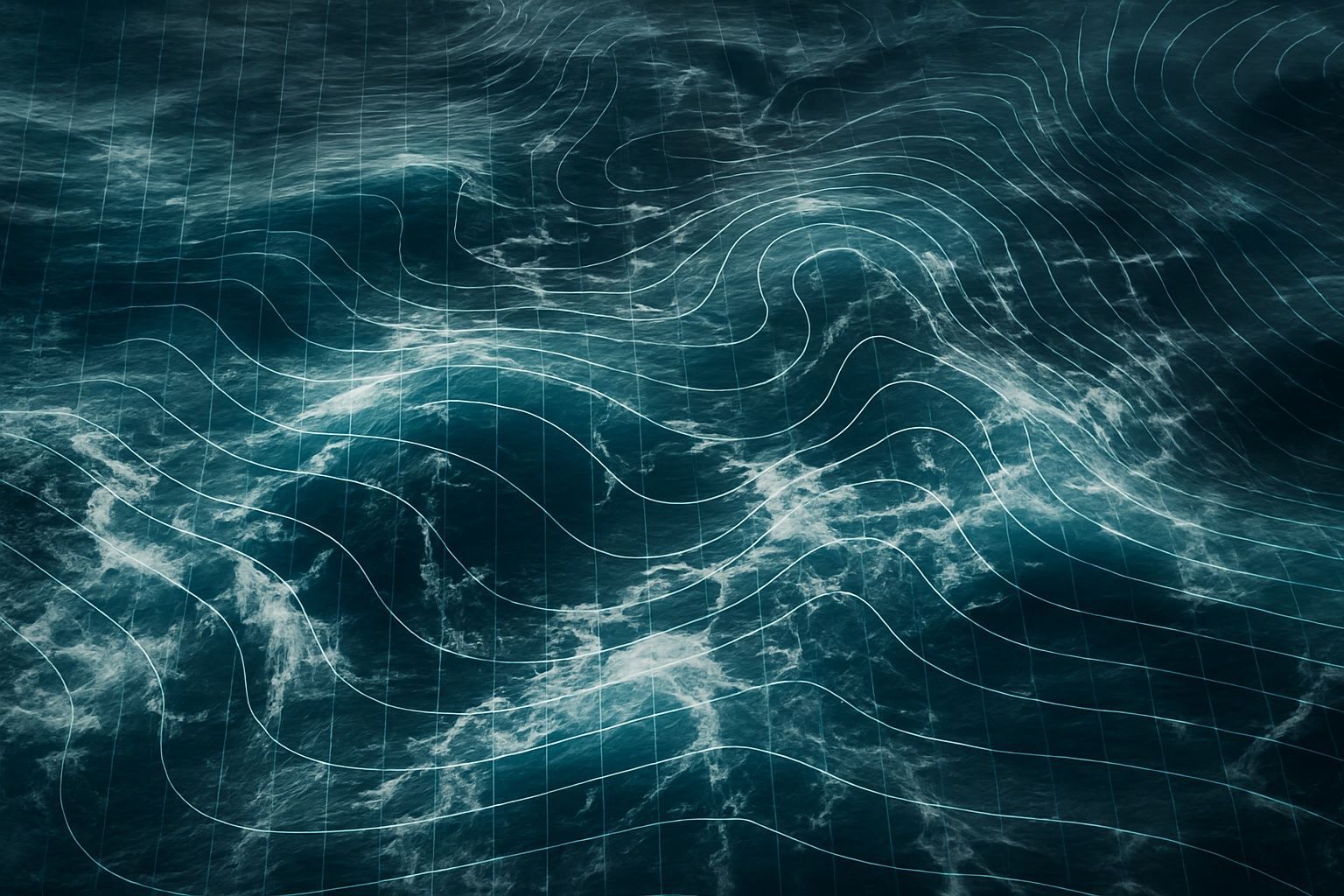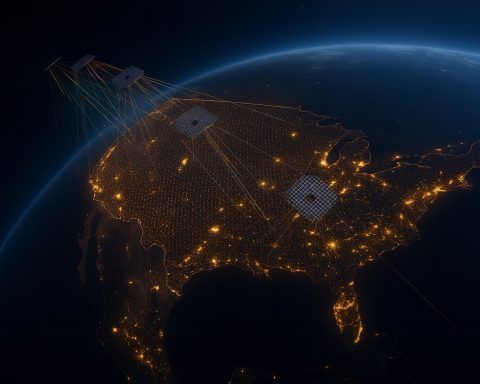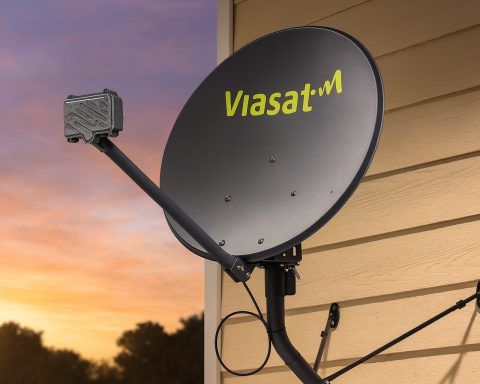- Since 1993, TOPEX/Poseidon and the Jason series have produced a continuous global mean sea level record, showing a rise of about 3.1–3.3 millimeters per year with acceleration to over 4 millimeters per year in the last decade and by 2023 the global mean sea level was over 100 millimeters higher than in 1993.
- Seasat (1978) carried a radar altimeter and, during its 105-day mission, provided ocean data that followed GEOS-3’s 1975 testing of radar altimetry.
- TOPEX/Poseidon, launched in 1992, carried two altimeters (NASA Ku/C-band and CNES Poseidon) and achieved sea-surface height accuracy of about 2–3 centimeters on a 10-day repeat orbit.
- Jason-1 (2001), Jason-2 (2008), and Jason-3 (2016) continued the TOPEX/Poseidon lineage on the same 10-day ground track, delivering a seamless 30-plus-year climate-quality sea level record.
- Envisat (2002–2012) carried the advanced RA-2 altimeter in a 35-day orbit, providing dense ocean and ice observations.
- CryoSat-2 (2010) used a synthetic aperture radar interferometric altimeter (SIRAL) to sharpen along-track resolution for ice and also improve open-ocean measurements.
- SARAL/AltiKa (2013) was a joint ISRO-CNES mission carrying a Ka-band altimeter that offered higher vertical resolution and better coastal performance.
- Sentinel-3A (2016) and Sentinel-3B (2018) carry the SRAL radar altimeter in SAR mode, provide near-real-time data, and extend ocean observations to latitudes up to 82°N/S.
- Sentinel-6 Michael Freilich, launched November 2020, carries Poseidon-4 with Ku, C, and SAR modes and operates on a 10-day repeat, with a twin Sentinel-6B planned around 2025 to maintain continuity.
- SWOT (Surface Water and Ocean Topography), launched in 2022, introduces a Ka-band interferometric wide-swath altimeter mapping the ocean surface over a ~120 km swath and resolving features down to 10–20 km, including inland waters.
Studying the vast oceans from the deck of a ship or a buoy has always been a daunting challenge. Today, fleets of Earth-observing satellites serve as an “eye in the sky” for oceanographers, providing a continuous, planet-wide view of the seas. Unlike traditional ship-based methods that can only cover limited regions at a time, satellites offer synoptic and frequent coverage of nearly the entire ocean surface [1]. This revolutionary capability comes at a critical time – from tracking global sea-level rise to monitoring powerful currents and storms, satellites have become indispensable for understanding and managing the oceans in an era of rapid environmental change. In short, modern oceanography has been redefined by satellite technology, which allows scientists to observe the oceans with unprecedented detail and timeliness, transforming how we assess everything from daily weather to long-term climate trends.
What is Sea-Surface Altimetry and How Does it Work?
At the heart of satellite oceanography is radar altimetry, a technique for measuring the height of the sea surface from space. An altimeter is an active microwave radar instrument that sends a pulse of radio waves straight down to the ocean and times how long it takes for the echo to return [2]. By multiplying this round-trip time by the speed of light, the altimeter determines the distance (range) between the satellite and the sea surface. If the satellite’s exact position in orbit is known, then the sea-surface height (SSH) above a reference ellipsoid (a model of Earth’s shape) can be calculated [3] [4]. Because the ocean surface is not flat – it has hills and valleys influenced by gravity, currents, and winds – these measurements reveal the ocean’s topography relative to Earth’s gravity field (the geoid) [5].
Several corrections are applied to altimetry data to achieve centimeter-level accuracy. For example, signals slow down slightly due to the atmosphere: the ionosphere (charged upper atmosphere) and troposphere (lower atmosphere) can delay the radar pulse. Dual-frequency altimeters (operating at two microwave wavelengths) help correct ionospheric delay, and a microwave radiometer on the satellite measures water vapor to correct tropospheric delay. Precise orbit determination – using GPS, laser ranging, or the Doppler-based DORIS system – is equally critical, since knowing the satellite’s exact position in space is essential for accurate sea-level calculations [6]. In essence, satellite altimetry is a marvel of precision engineering: by timing radio pulses to a few nanoseconds and tracking orbital motion to a few centimeters, we can monitor the ocean’s height to within a few centimeters or better [7].
Sea-surface altimetry provides three key measurements in each radar echo: (1) the sea-surface height (after applying all corrections), (2) the significant wave height (derived from the shape of the return pulse spread – rougher seas broaden the echo), and (3) the surface wind speed over the ocean (inferred from the strength of the returned signal). This means a single altimeter can simultaneously monitor the ocean’s surface topography, its wave conditions, and winds. Taken together, these measurements form a powerful dataset for oceanographers and climate scientists.
The Role of Satellite Altimetry in Oceanographic Research
1. Monitoring Global Sea-Level Rise: One of the most crucial contributions of satellite altimetry has been the precise monitoring of global mean sea level over the past three decades. Since 1993, a continuous record from satellites like TOPEX/Poseidon and the Jason series has shown that the global ocean is rising at an average rate on the order of 3.1–3.3 millimeters per year [8]. Even more concerning, the rate of rise has accelerated in recent years – for example, increasing from about 2.9 mm/yr in the 1990s to over 4 mm/yr in the last decade [9]. By 2023, the global mean sea level was over 100 mm (10 cm) higher than it was in 1993, making it the highest in the satellite record [10]. These precise measurements are only possible because altimetry satellites can measure the ocean height with a few millimeters of precision when averaged globally [11]. They effectively act as orbiting tide gauges, sampling the ocean surface across the entire globe every few days. Altimetry has thus become an essential tool for climate science – an “early warning system” for sea-level rise, providing hard evidence of ocean warming (through thermal expansion) and land-ice melt contributions [12]. Policymakers and coastal planners rely on this satellite-derived sea-level index to project future flooding risks and to gauge progress relative to climate model predictions [13].
2. Mapping Ocean Currents and Circulation: Satellite altimetry opened a new window into understanding ocean circulation by allowing us to map the slope of the sea surface – and hence infer surface currents – across the entire ocean. In the ocean, water piles up slightly in regions of higher pressure and is depressed in low-pressure areas. These minute height differences (on the order of tens of centimeters over hundreds of kilometers) drive geostrophic currents, which flow along the lines of equal pressure. Because large-scale ocean currents are nearly in geostrophic balance, measuring the tilt of the sea surface tells us the speed and direction of currents [14] [15]. In practice, altimeter profiles of sea-surface height can be differentiated to derive the sea-surface slope, from which surface current velocities are calculated. Using this method, satellites have mapped major currents like the Gulf Stream and Kuroshio, and even smaller eddies and rings, with unprecedented detail. For example, the TOPEX/Poseidon mission and its successors demonstrated that the surface geostrophic currents can be determined from space, something nearly impossible to achieve globally with ship drifters or buoys [16]. Today, multiple altimeters working in tandem allow the production of global maps of sea level and currents, updated daily. These data are assimilated into operational models to provide near-real-time ocean current fields [17], aiding fisheries, ship routing, and research into ocean dynamics.
3. Measuring Waves and Ocean Roughness: In addition to height, altimeters have become an important source of data on ocean wave conditions. Each radar pulse reflection contains information about wave height – specifically, the significant wave height (the average of the highest one-third of waves) – which can be extracted from the echo shape. Since the 1980s, satellite altimetry has built a record of global wave climatology, helping scientists and engineers understand wave patterns and trends. This is vital for designing offshore structures, routing ships, and forecasting hazardous seas. Altimeters also estimate surface wind speed over the ocean by measuring the power of the return signal (higher winds roughen the sea, causing a weaker reflection). These wind and wave datasets have improved weather and wave forecasting models, since they provide measurements even in remote ocean areas where no buoy or ship observations exist. With multiple satellites, global maps of wave height and wind speed are generated in near real-time [18], contributing to marine weather services that warn of storm waves or help optimize shipping routes.
4. Tracking Climate Oscillations and Weather Phenomena: Beyond long-term sea-level rise, satellite altimetry is crucial for monitoring shorter-term climate oscillations like the El Niño–Southern Oscillation (ENSO) and other ocean-atmosphere patterns. During the 1997–98 El Niño, for instance, altimeters clearly observed a higher-than-normal sea-surface height in the central and eastern Pacific, reflecting the warming and redistribution of water – a signal that was critical for understanding the event’s evolution. Altimetry data have similarly been used to track La Niña, the Pacific Decadal Oscillation, the Indian Ocean Dipole, and more [19]. By measuring the changing distribution of heat (via sea level), satellites help climate scientists monitor these oscillations that affect global weather patterns. Altimetry has also been instrumental in observing storm surges and ocean responses to hurricanes. For example, as a hurricane passes over the ocean, it leaves a distinctive sea-level “signature” and can generate a storm surge along coasts. Near-real-time altimeter data are now used to produce sea level anomaly maps that forecasters use to predict storm surge impacts [20]. In fact, the U.S. National Hurricane Center assimilates altimetry-derived ocean heat content information to improve hurricane intensity forecasts, since hurricanes intensify over warm, high-energy waters [21] [22]. These applications highlight how altimetry has become a vital tool not just for climate research but also for operational weather prediction and disaster response.
5. Other Oceanographic Phenomena: Satellite altimetry’s contributions span many other areas of ocean science. It has improved our knowledge of ocean tides by measuring tidal heights in the open ocean (far from land gauges); this has led to more accurate global tide models and better tide forecasts [23]. Altimetry also enables the discovery of hidden undersea features: since undersea mountains slightly alter the gravity field and “bulge” the ocean surface outward, altimeter measurements can reveal previously uncharted seamounts and variations in Earth’s gravity. This technique, known as altimetric bathymetry, has helped map the seafloor in combination with ship sonar data [24] [25]. Furthermore, by observing sea level around ice-covered regions, radar altimeters (including specialized ones on CryoSat-2) monitor polar oceans and even the thinning of ice shelves from their buoyant response. In summary, from deep ocean basins to the polar seas, satellite altimeters have become fundamental for observing ocean phenomena that were once invisible to scientists.
Historical Breakthroughs: A Brief History of Satellite Altimetry
The concept of measuring the ocean’s height from space dates back to the early space age. Experimental altimeters were flown on the Skylab space station (1973–74), but the first dedicated mission was GEOS-3 (1975), a NASA satellite that tested radar altimetry over the oceans [26]. These early forays demonstrated the basic feasibility of satellite altimetry. It was Seasat in 1978, however, that is often cited as the first major oceanographic satellite. Seasat carried a radar altimeter along with other microwave sensors, and in its brief 105-day mission it measured sea-surface winds, waves, and heights [27]. Seasat proved a game-changer: despite its short life, it returned more ocean data than the previous 100 years of ship surveys [28], revealing for the first time the ocean’s dynamic topography – the highs and lows of the sea surface – on a global scale. This success paved the way for routine altimetric monitoring of oceans.
During the 1980s, satellite altimetry further matured. The U.S. Navy launched GEOSAT (1985), which carried a precise radar altimeter primarily to map the marine geoid (for submarine navigation). GEOSAT’s data were partly classified at first, but when eventually released, they provided a detailed view of ocean surface bumps and dips caused by undersea mountains and currents [29]. On the civilian side, the European Space Agency (ESA) entered the field with ERS-1 (European Remote Sensing satellite-1) in 1991, followed by ERS-2 in 1995. The ERS satellites each carried a radar altimeter among a suite of instruments, marking Europe’s first comprehensive effort in satellite oceanography. ERS-1 and 2 operated in a 35-day repeat orbit and fulfilled a wide range of objectives – from measuring wave heights and sea-surface temperatures to mapping polar ice – demonstrating the multi-disciplinary value of altimetry [30]. Notably, ERS-1’s tandem mission with ERS-2 in the mid-1990s doubled the coverage and helped cross-calibrate the two altimeters, ensuring continuity.
The 1990s saw a quantum leap in altimetry with the TOPEX/Poseidon mission (T/P), a collaboration between NASA and France’s space agency CNES. Launched in 1992, TOPEX/Poseidon was the first to deliver high-precision, long-term monitoring of sea level. It carried two altimeters (one NASA-built Ku/C-band and one CNES-built Ku-band called Poseidon) that provided unprecedented accuracy – measurements of sea-surface height to within about 2–3 cm. T/P flew in a 10-day repeat orbit that became the standard for subsequent reference missions. Its data record (1992–2005) revolutionized oceanography: T/P revealed details of the global mean sea-level rise and captured events like the 1997–98 El Niño with striking clarity [31]. The success of TOPEX/Poseidon confirmed that a continuous altimetry reference record was both possible and scientifically indispensable.
Building on this, a series of Jason satellites continued the legacy. Jason-1 was launched in 2001 (NASA/CNES), Jason-2 in 2008 (a four-agency effort: NASA, NOAA, CNES, and EUMETSAT), and Jason-3 in 2016 (similar international partnership). Each Jason satellite essentially picked up where its predecessor left off – flying the same ground track and maintaining the climate-quality sea level record [32]. These satellites collectively have provided a seamless 30+ year altimetry time series on the exact same orbit, like a continuous thread from 1992 to the present. The Jason missions improved instrumentation (e.g. better stability and tracking) and extended coverage, but a hallmark of their success is the careful cross-calibration during mission overlaps. For instance, Jason-1 was launched just before TOPEX/Poseidon retired, allowing direct comparison of measurements and a handover with no bias; similarly Jason-2 overlapped Jason-1, and so on. As a result, the combined T/P–Jason record is extremely stable and precise, often cited as one of the most important datasets for climate change monitoring [33].
Meanwhile, other altimetry missions augmented our view. ESA’s Envisat (2002–2012) carried a next-generation RA-2 altimeter and operated in a 35-day orbit, providing dense measurements complementing Jason’s coverage. Envisat continued the European lineage after ERS-2, and its larger suite of sensors (imaging radars, radiometers, etc.) made it an Earth observation workhorse for a decade. In 2010, ESA launched CryoSat-2, featuring a synthetic aperture radar altimeter (SIRAL) optimized for ice surfaces but also capable of high-resolution open-ocean measurements. CryoSat-2’s use of synthetic aperture and interferometric techniques foreshadowed the future of altimetry by sharpening the along-track resolution (to ~300 meters) and improving data over sea-ice and near the coasts.
Another innovation came with SARAL (Satellite with ARgos and ALtiKa), a 2013 Indo-French mission. SARAL’s AltiKa instrument was the first operational Ka-band altimeter, transmitting at a higher frequency than the standard Ku-band. The higher frequency allowed improved vertical resolution and potentially finer spatial detail (at the cost of more sensitivity to rain). SARAL/AltiKa proved valuable for resolving smaller-scale features and paved the way for using Ka-band in future missions.
By the 2010s, the need for operational oceanography led to new satellite series under Europe’s Copernicus program. Sentinel-3A, launched in 2016, and Sentinel-3B in 2018, each carry a radar altimeter (among other instruments) to provide routine monitoring of sea state. Their altimeter operates in SAR mode (delay-Doppler) over the ocean, inheriting CryoSat’s advances to achieve higher resolution along the satellite’s ground track. The Sentinel-3 satellites have a 27-day repeat and cover higher latitudes (up to 82°N/S), improving coverage of polar oceans. Data from Sentinel-3 are used in near-real-time for applications like European marine forecasts and are a key part of the global altimetry constellation.
A recent milestone in the historical timeline was the launch of Sentinel-6 Michael Freilich in November 2020. This satellite – named after the former NASA Earth Science Division director – is effectively Jason-4, developed jointly by ESA, EUMETSAT, NASA, NOAA, and CNES to continue the high-precision altimetry record [34]. Sentinel-6 carries the latest Poseidon-4 altimeter, with both Ku and C bands and an ability to operate in a high-resolution SAR mode over the open ocean. It also has advanced GPS and DORIS receivers for precision orbit tracking, and a microwave radiometer for atmospheric correction. Sentinel-6 Michael Freilich now flies the same historic 10-day orbit, effectively extending the TOPEX/Jason series into a fourth decade. A twin satellite, Sentinel-6B, is slated for launch around 2025 to ensure continuity well into the 2030s.
Finally, it’s worth noting that beyond Europe and the U.S., other nations have joined the altimetry endeavor. Notably, China’s Haiyang-2 (HY-2) series of ocean satellites (HY-2A launched in 2011, followed by 2B in 2018, 2C in 2020, and 2D in 2021) carry altimeters alongside microwave radiometers and scatterometers [35]. These satellites provide additional coverage and data over the global oceans and represent China’s growing role in ocean monitoring. The Indian Space Research Organisation (ISRO), besides cooperating on SARAL, is developing its own follow-on altimetry missions as well. The evolution of satellite altimetry has thus been a global enterprise, progressing from single experimental U.S. satellites to a robust international constellation of precision oceanographic missions.
Table 1 below summarizes some of the major satellite altimetry missions, highlighting their launch dates, key features, and the agencies involved:
| Mission (Launch) | Key Features | Operating Agencies |
|---|---|---|
| Seasat-1 (1978) | First oceanographic satellite with radar altimeter (Ku-band); measured sea-surface height, winds, waves; 3-month lifespan [36]. | NASA (JPL) |
| Geosat (1985) | US Navy geodetic altimeter mission; 17-day repeat orbit; mapped ocean geoid and sea-surface height variability (partly classified data). | U.S. Navy (APL/JHU) |
| ERS-1 (1991) & ERS-2 (1995) | European Remote-Sensing sats with altimeter (35-day repeat) plus SAR and radiometer; monitored oceans, ice, waves, and winds [37]. | ESA |
| TOPEX/Poseidon (1992) | High-precision dual-frequency (Ku/C) radar altimeter; 10-day repeat; provided first long-term precise sea level record [38]. | NASA (JPL) & CNES |
| Jason-1 (2001), Jason-2 (2008), Jason-3 (2016) | Successors to TOPEX/Poseidon on same 10-day orbit; improved altimeters and orbit determination; jointly operated (Jason-2/3 with multilateral partners) [39]. | NASA & CNES (+NOAA, EUMETSAT for J-2/3) |
| Envisat (2002) | Multifunction ESA satellite with advanced RA-2 altimeter (dual freq) on 35-day orbit; extended ocean and ice observations (2002–12). | ESA |
| CryoSat-2 (2010) | Polar orbit; featured SAR/Interferometric Radar Altimeter (SIRAL) for high-resolution ice altimetry; also improved ocean measurements in SAR mode. | ESA |
| SARAL/AltiKa (2013) | Small satellite with Ka-band altimeter (AltiKa) for higher resolution and precision; 35-day repeat orbit. | ISRO (India) & CNES (France) |
| Sentinel-3A (2016) & 3B (2018) | Copernicus operational satellites; carry SAR altimeter (SRAL) plus sensors for sea-surface temperature and ocean color; ~27-day repeat; near-real-time data for ocean services. | ESA & EUMETSAT |
| Sentinel-6 Michael Freilich (2020) | High-precision altimetry mission (Jason-CS series) continuing the TOPEX/Jason record; Ku/C/SAR altimeter Poseidon-4; 10-day repeat [40]. | ESA, EUMETSAT, NASA, NOAA, CNES |
| Haiyang-2A/B/C/D (2011–2021) | Ongoing Chinese ocean-dynamics satellites; carry radar altimeter, microwave radiometer, and scatterometer to monitor sea level, winds, and waves. | CNSA (China) |
| SWOT (2022) | Surface Water and Ocean Topography mission; first wide-swath interferometric altimeter (Ka-band) mapping ocean surface heights at high 2D resolution (down to ~1–2 km scales) [41]. | NASA & CNES (with CSA, UK Space Agency) |
Current Satellites and Their Capabilities – A Global Collaboration
As of the mid-2020s, an impressive constellation of altimetry satellites is in operation, jointly painting a near real-time picture of Earth’s oceans. No single satellite can cover the entire globe quickly, but by coordinating multiple missions, we achieve both frequent updates and fine spatial coverage. Several satellites now work together as part of this integrated system:
- Reference Missions for Sea-Level: The Jason-3 satellite (launched 2016) and its successor Sentinel-6 Michael Freilich (2020) are the backbone of the high-precision sea-level record. They fly the same ground track that TOPEX/Poseidon did, acting as “orbiting tide gauges” that revisit exact points every 9.9156 days [42]. These missions are the result of international partnerships – for example, Jason-3 is a four-way collaboration between NOAA, NASA, CNES, and EUMETSAT [43]. By combining the engineering expertise and resources of multiple agencies, they achieve remarkable accuracy and stability. Sentinel-6 Michael Freilich, operated by Europe (ESA/EUMETSAT) in partnership with the U.S., carries the latest altimeter technology and even features an experimental GNSS-reflectometry receiver to test new ways of measuring winds and waves. A second Sentinel-6 spacecraft (twin to Michael Freilich) is planned to launch in 2025, ensuring the reference sea-level data stream extends well into the 2030s.
- Operational Oceanography Satellites: In addition to the reference altimeters, the Sentinel-3A and 3B satellites (operated by ESA/EUMETSAT) continually survey the oceans. Their SAR altimeters operate in a high-resolution mode, which is especially useful for measuring smaller-scale features and coastal sea level. Sentinel-3 also carries instruments to measure sea-surface temperature and ocean color, making it a versatile workhorse for ocean monitoring. Data from Sentinel-3 feeds directly into the EU’s Copernicus Marine Service, which supports applications ranging from marine weather forecasts to ship routing and fisheries management [44] [45]. Other currently active missions include CryoSat-2, which, despite being designed for ice, provides valuable ocean data in ice-free regions (often used to improve resolution of coastal altimetry), and SARAL/AltiKa (which operated until 2020, with ISRO planning a follow-on mission).
- Regional and National Missions: The Haiyang-2 series from China has expanded to multiple satellites (with HY-2C and 2D both aloft in recent years), effectively creating a mini-constellation that improves coverage in Asia-Pacific and globally [46]. India and France have discussed a follow-on to SARAL, and emerging programs may soon contribute more altimeters. Even commercial initiatives are exploring altimetry-like data through techniques such as GNSS reflectometry, although these are not yet equivalent to the traditional radar altimeters in resolution or accuracy.
Together, these satellites enable a more complete and frequent sampling of the ocean. For example, NOAA’s Laboratory for Satellite Altimetry routinely merges data from multiple altimeters to generate global maps of sea level anomalies and surface currents with just a few days’ delay [47]. This collaborative approach is essential for operational oceanography. It ensures that if one satellite has a gap or orbit limitation, others can fill in, and it allows cross-checking and calibration between missions to maintain data quality.
International collaboration is truly the norm in satellite altimetry. NASA and CNES pioneered this with the joint TOPEX/Poseidon and Jason series, and that model now extends to partnerships involving NOAA (for operational oversight), ESA/EUMETSAT (bringing Europe’s technical and operational capacity), ISRO, CNSA, and others. The sharing of data is also global – agencies typically make altimetry data freely available to scientists and operational users worldwide. As a result, regardless of which country launched a satellite, its measurements contribute to a common, unified picture of the oceans. This spirit of collaboration means that decisions in coastal management, climate science, and navigation are being made with the best collective information humankind can obtain about the oceans from space.
In terms of capabilities, today’s altimeters are more advanced than ever. The use of synthetic aperture radar (SAR) processing on missions like Sentinel-3 and Sentinel-6 has improved the along-track resolution (down to ~300 m) and signal clarity, especially in coastal zones where the returns are complex. Dual-frequency operation (Ku and C band) on reference missions allows for precise ionospheric corrections, and tri-frequency or wideband altimeters are on the horizon. Satellites now carry multiple independent tracking systems (GPS, DORIS, laser retro-reflectors) to nail down their orbits to within 1–2 cm [48], an astonishing feat that underpins all sea-level calculations. These capabilities, combined with nearly continuous inter-calibration efforts, mean that a change of just a few millimeters per year in global sea level can be detected confidently – a remarkable testament to international science cooperation and engineering.
Technological Advancements and Ongoing Challenges in Altimetry
The field of satellite altimetry has seen significant technological leaps since the early days. One major advancement is the move toward higher resolution measurements. Traditional altimeters observe one point directly beneath the satellite (the nadir) with a footprint of a few kilometers. Newer techniques, however, use signal processing to achieve finer detail. Delay-Doppler altimetry, also known as SAR altimetry, is one such innovation: by combining echoes in a way that accounts for the Doppler shift across the satellite’s path, the footprint is narrowed and along-track sampling is sharpened. This was first demonstrated on CryoSat-2 and later applied on Sentinel-3 and Sentinel-6’s altimeters, allowing detection of smaller-scale ocean features and better performance near land [49].
Another leap is the development of wide-swath altimetry. The upcoming generation, exemplified by the SWOT mission, uses two antennas to form an interferometer, capturing a swath of the surface tens of kilometers wide instead of just a single point track. SWOT’s Ka-band Radar Interferometer will map ocean topography in two dimensions at high resolution, revealing features like eddies a few kilometers across that are missed by conventional altimeters. This is a major innovation aimed at resolving the “mesoscale and sub-mesoscale” ocean processes that are crucial for understanding mixing, ocean energy cascades, and cross-shelf exchanges.
Despite the progress, technical challenges remain. One perennial challenge is measuring near the coastline. Radar echoes from the ocean near coasts can be contaminated by land, making it difficult to get accurate sea level right up to the shoreline (where it is most needed for societal impact). Efforts to overcome this include specialized signal processing (retracking algorithms that can distinguish land vs. ocean echoes) and new hardware (the SAR mode’s improved focus helps). Projects like the upcoming CRISTAL mission (Copernicus Polar Ice and Snow Topography Altimeter), while focused on ice, will carry a dual-frequency altimeter that could offer enhanced performance in coastal waters too. The community is also developing dedicated “coastal altimetry” datasets by reprocessing existing mission data at higher rates (20 Hz or 40 Hz measurements) to better resolve coastal sea level variability [50].
Another challenge is maintaining the accuracy and stability required for climate records. Detecting a 0.1 mm/year² acceleration in global sea level, for instance, demands extreme precision. Calibration and validation are crucial: satellites are routinely calibrated by overflying ground truth sites (like the Harvest platform off California or other calibration sites equipped with corner reflectors and tide gauges). Any drift in the instrument must be corrected. The good news is that through overlapping missions and calibration campaigns, the altimetry record has been kept remarkably consistent – multiple missions have been interwoven such that the final sea-level trend is accurate to within ±0.4 mm/yr or better [51].
Precise orbit determination was once a challenge as well, but with today’s GPS and laser ranging, satellites know their position to a few millimeters. As one NASA report put it, “knowing the precise location of a satellite in space is critical for determining sea surface height and, through this, the rate of global mean sea level rise” [52]. This remains an area of continual improvement, as even small errors in gravity models or tracking can introduce biases. New gravity field data from missions like GRACE and GRACE-FO (which map Earth’s gravity) have improved orbit solutions for altimetry by refining the geoid and orbital perturbation models.
Instruments themselves are also improving. The radiometers on altimetry satellites (used to correct atmospheric water vapor) have become more stable and better characterized, reducing another source of error. Some altimeters now include an experimental “nadir Doppler wind” mode or GNSS-reflectometry unit, to complement traditional wind speed estimates and potentially measure directional wave spectra – an example of technology fusion to get more ocean information out of a single platform.
Data handling and processing present a growing challenge in the era of Big Data. The volume of altimetry data is exploding, especially with SAR modes and wide-swath instruments. For instance, the Sentinel-3 mission produces orders of magnitude more data per orbit than earlier missions [53]. Storing, processing, and distributing this to users in near-real-time tests the limits of data systems. Efforts like cloud-based data hubs and common open data formats (like netCDF and CF conventions) are being used to manage this, alongside sophisticated compression.
Finally, the finer details of the ocean – like small, short-lived eddies or internal tides – remain at the edge of altimeters’ observational capability. Future constellations with many satellites (including microsatellites) could increase the temporal resolution (sampling each area daily instead of the current 5-10 days) [54]. Studies suggest that deploying a “swarm” of altimeters in carefully designed orbits could capture more of the fast dynamics, benefiting both ocean prediction and climate monitoring [55] [56]. As technology advances, we may even see hybrid missions that combine radar altimetry with laser altimetry or lidar (though lasers, used in missions like ICESat for ice heights, are limited by clouds for ocean use), or perhaps entirely new approaches like quantum gravimetry to measure ocean mass changes directly.
In summary, satellite altimetry’s technical evolution is ongoing – each generation of instruments brings improvements in resolution, accuracy, and coverage. Challenges such as coastal measurements, data volume, and maintaining climate-quality records are being actively addressed through international collaboration and innovation. The ultimate goal is to observe the oceans continuously, with greater detail and certainty, to meet the needs of science and society.
Real-World Impacts: From Coastal Planning to Climate Science
Satellite altimetry might sound like a specialized remote-sensing technique, but its real-world impacts are broad and significant. By translating the altimeter’s numbers into meaningful information, scientists and decision-makers are improving forecasts, guiding infrastructure planning, and deepening our understanding of Earth’s changing climate. Here are some of the key practical applications:
- Coastal Planning and Adaptation: Coastal communities around the world face the dual threat of rising sea levels and changes in storm patterns. Altimetry provides critical data for addressing these challenges. The continuous record of global and regional sea-level rise from satellites is a cornerstone for coastal risk assessments – planners use these trends to update flood maps, design seawalls, and make long-term decisions about managed retreat or resilience measures. Moreover, altimeters can detect regional variations in sea level (for instance, some regions of the Western Pacific have risen faster than the global average). Such information helps local authorities prioritize adaptation efforts where the sea is rising the fastest. Beyond long-term rise, satellite data assist with immediate coastal management issues. For example, the Jason altimeters have been used to monitor seasonal and annual changes in coastal sea level and wave climate, informing decisions like beach nourishment schedules. As one NASA oceanographer noted, Jason-series altimetry of sea-level trends has been used in planning beach re-nourishment projects to combat erosion [57]. In delta regions, altimetry combined with models can help distinguish sea-level rise from land subsidence, so engineers know whether sinking land or rising water (or both) are the problem. In short, by providing a quantitative basis for how much and how fast oceans are encroaching on coastlines, satellites are empowering coastal planners to make science-based decisions.
- Weather Forecasting and Ocean State Prediction: The integration of altimetry data into weather and ocean forecast models has markedly improved their skill. One prominent example is hurricane forecasting. Hurricanes draw energy from warm ocean waters; satellite altimetry is used to estimate Ocean Heat Content by looking at sea-surface height anomalies (a warmer, high-energy ocean region has a higher surface height). These data are ingested by the U.S. National Hurricane Center to anticipate whether a storm will intensify when it passes over a given ocean patch [58] [59]. In fact, altimetry-derived maps of the ocean – often combined with data from Argo floats – have been credited with improving hurricane intensity forecasts by indicating where the deep warm water is that can fuel rapid intensification. More generally, operational oceanography models (like those used by NOAA, the UK Met Office, and ECMWF) assimilate altimeter sea-level data every day to produce analyses and forecasts of the ocean state [60]. This leads to better marine weather forecasts, including more accurate predictions of storm surges, eddy positions, and even large-scale climate patterns. Altimetry also contributes to El Niño/La Niña outlooks: by observing the build-up of warm water in the western Pacific and its eastward shift, altimeters provide early indication of developing El Niño events, which influence seasonal weather worldwide [61]. Thus, through both direct assimilation and by validating ocean models, satellite altimeters play a key role in modern weather and climate forecasting systems.
- Safe Navigation and Shipping Efficiency: Shipping companies and navies have a keen interest in the information altimetry provides. One aspect is safety – knowing the ocean’s surface conditions. Near-real-time altimeter measurements of wave height are assimilated into wave models, improving forecasts of rough seas that ships need to avoid. Another aspect is efficiency: ocean currents can significantly speed up or slow down a vessel, so accurate current data can save fuel and time. Satellites routinely map currents like the Gulf Stream or Kuroshio and smaller eddies, and this information is used in route planning tools to optimize ship paths. For instance, the European Copernicus marine service provides maps of sea-surface height and derived currents to shipping companies, and mariners use these to take advantage of favorable currents or steer clear of adverse ones [62]. As one EUMETSAT manager explained, up-to-date knowledge of currents from satellites helps ships “save fuel on the route, or shorten their route” by exploiting ocean flow [63]. In high latitudes, altimetry contributes to sea-ice forecasts (by helping determine wind forcing and ocean tilt along ice edges), aiding navigation in ice-infested waters. In shallow coastal areas, altimetric data combined with models can even refine tide and surge predictions for harbor navigation. Lastly, altimetry-based bathymetric maps (the sea-floor maps inferred from gravity-induced sea-surface bumps) have been used to improve nautical charts in poorly surveyed areas, indirectly enhancing navigation safety. All these examples show how satellite altimetry data have quietly become part of the operational toolkit that keeps global commerce moving safely and efficiently [64] [65].
- Environmental and Ecosystem Management: Altimetry data are also used in managing marine ecosystems and resources. Fisheries researchers, for example, look at altimeter-derived eddies and upwelling zones – areas where sea level is depressed often coincide with cold, nutrient-rich waters that are good for fish, whereas high sea level can indicate warm stratified waters with less nutrients. By tracking sea level anomaly maps and currents, they can infer where productive fishing grounds might form or where fish (like tuna) might concentrate, since big fish often linger around ocean fronts and eddies detectable via altimetry. Conservation efforts for marine animals also benefit: turtles, for instance, migrate with currents, and knowing the current patterns helps predict their movement or locate accumulation zones of floating plastic debris. Additionally, altimetry contributes to monitoring coral reef health indirectly – coral bleaching events are tied to sustained high sea temperatures, which altimetry can hint at via thermal expansion signals. Park managers use a combination of satellite SST and height anomaly data to gauge heat stress on reefs. In coastal wetlands, altimetry (when combined with land topography data) can help map which areas are becoming more frequently inundated as baseline sea level creeps up, informing habitat conservation and restoration strategies.
- Climate Research and Policy: On the grandest scale, satellite altimetry has transformed our understanding of the climate system and provided hard evidence to inform policy. The altimeter-based sea-level record is a key indicator in international climate assessments (e.g., IPCC reports) – it is the direct measure of one of the most consequential impacts of global warming. Altimetry has confirmed not only that sea level is rising, but that the rise is accelerating [66], implicating increasing ice melt and ocean heat uptake. This record has been vital in galvanizing global climate policy, serving as a reality check for emissions scenarios and ice sheet models. Furthermore, altimetry allows scientists to close the sea-level budget: by comparing total sea-level rise to the sum of contributions (glacier melt, ice sheets, ocean thermal expansion), we can verify our understanding of climate-driven changes. Any imbalance can indicate missing physics or data issues. Fortunately, agreement has improved over time, and the ongoing altimetry missions continue to track how much sea level each factor is adding [67] [68]. This has direct policy relevance – for example, nations use projections of future sea-level rise (anchored by altimeter observations) to commit resources for mitigation and adaptation under frameworks like the UN Paris Agreement.
In all, the information derived from satellite altimetry has moved out of the research realm and into the operational and public sphere. Whether it’s a coastal engineer designing a flood barrier, a ship captain plotting a transoceanic route, or a climate scientist testifying to policymakers, the “eye in the sky” provided by altimetry satellites is making a tangible difference. As one review paper succinctly put it, satellite altimetry missions are vital for monitoring and forecasting extreme events – from cyclones to floods – and for supporting decision-making in coastal hazard management [69] [70]. The societal benefits of these missions underscore why many nations continue to invest in them and in the international partnerships that make them possible.
The Future of Ocean Observation from Space
Looking ahead, the future of oceanography from space is poised to be even more exciting. Several next-generation missions and trends promise to enhance our understanding of the oceans and address the remaining observational gaps:
- SWOT and High-Resolution Ocean Topography: The Surface Water and Ocean Topography (SWOT) mission, launched in late 2022, heralds a new era by moving from 1-D profiles to 2-D mapping. SWOT’s innovative Ka-band interferometric altimeter will measure the ocean’s surface height over a swath ~120 km wide, with a gap in the middle for the spacecraft’s nadir track. This means that instead of inferring eddies and fronts by stitching together multiple pass tracks, we will directly observe the shape of the ocean surface over large areas in one snapshot. SWOT is designed to resolve ocean features down to about 10–20 km in size (and potentially even smaller with processing), capturing the rich eddy field that carries heat, carbon, and nutrients in the upper ocean [71]. Oceanographers are eager to see these data, as they will fill in the “terra incognita” on the ocean mesoscale map – the short-lived, smaller whirlpools and jets that standard altimeters often miss. Additionally, SWOT will survey inland waters (lakes, reservoirs, rivers) with unprecedented detail, bridging oceanography and hydrology. The wealth of data SWOT provides will be a boon for improving ocean models (via assimilation), studying coastal sea level gradients, and understanding how ocean dynamics at fine scales might influence the larger climate. The challenge will be handling the big data volume and complexity, but agencies are already preparing new cloud-based tools and open science platforms for this task.
- Continued Emphasis on Continuity: Even as new missions debut, maintaining the unbroken time series of sea level and other key variables remains a top priority. Plans are in place for Sentinel-6B (the second Sentinel-6, to launch mid-decade) to take over from Michael Freilich seamlessly. Similarly, the Jason series legacy is likely to continue under the umbrella of future cooperative missions – perhaps a Jason-CS (Continuity of Service) extension beyond Sentinel-6B, or integrated into the next generation of Copernicus satellites. The value of a continuous record cannot be overstated: a kink or gap would make it harder to discern long-term changes. Thus, international partners are expected to keep flying at least one high-precision altimeter well into the future. The memorandum of understanding that gave birth to TOPEX/Poseidon in the 1980s is alive and well in new forms today.
- Constellation of Altimeters: Another anticipated trend is having more altimeters in orbit simultaneously. Today, typically 3–4 altimetry missions might be active (e.g., Sentinel-6, Jason-3, Sentinel-3A/B, CryoSat-2). In the future, this could increase with contributions from multiple countries or even commercial small satellites. Studies (including those by operational forecasting centers) have shown that adding more altimeters improves the resolution of global sea level maps and forecast skill [72]. We may see dedicated small-sat constellations that carry simplified altimeters or use novel techniques (like bistatic altimetry using signals of opportunity) to augment the big missions. One can imagine, for example, a set of microsatellites each with a lightweight altimeter filling in gaps between the bigger missions’ ground tracks daily. NASA’s upcoming OSTST (Ocean Surface Topography Science Team) meetings often discuss concepts like these, and some private companies are exploring the idea as well (though none have launched as of 2025 specifically for altimetry).
- Innovation in Frequencies and Techniques: Future altimeters might operate at even higher frequencies or multiple frequencies simultaneously to improve precision and reduce errors. Ka-band (as on SARAL and SWOT) has shown benefits in precision and smaller footprint; going to even higher frequency (e.g. W-band) could be explored, though atmospheric attenuation is a concern. We’ll also see improved inter-calibration techniques – like using the same internal calibration sources across multiple satellites, or reference to stable natural targets (the Amazon river’s flat pools are sometimes used for calibration) – to ensure consistency across missions. The integration of laser altimetry for certain uses (perhaps calm water or closer to coast where narrow laser footprint could shine, weather permitting) might complement radar altimeters in the future.
- Geostationary Altimetry and Other Orbits: One intriguing concept is a geostationary altimeter that could continuously monitor a particular region (e.g., a large ocean basin or vulnerable coastal area). While a geostationary altimeter would have coarse spatial resolution (due to the high altitude), it could track fast processes like tides, storm surges, or internal waves in one region in real time. Concepts for such missions (sometimes called “GeoSAT” or proposed under the GEO satellite programs) have been floated. If technology allows sufficient precision from geostationary orbit, it would be a powerful complement to LEO (low Earth orbit) altimeters, which provide global coverage but intermittent temporal sampling for a given point. Meanwhile, highly inclined orbits (like the Arctic-focused CRISTAL planned by ESA, with launch around 2027) will ensure the polar oceans get more attention – CRISTAL’s altimeters (yes, it carries two) will provide year-round monitoring of sea-ice thickness and also coastal polar ocean heights, addressing a current gap since most altimeters (apart from CryoSat) do not cover above 66°N/S.
- Integration with Other Observing Systems: The future is also about synergy. Altimetry data will be more tightly integrated with other satellite data – for example, combining altimetry with satellite gravimetry (like GRACE/GRACE-FO) to distinguish mass changes vs thermal expansion in sea level; or combining altimetry with ocean color and SST to study marine ecosystem responses to physical changes. The multi-sensor approach of missions like Sentinel-3 foreshadows this. We may also see advanced data assimilation and machine learning tools that can fuse satellite data with in-situ data (like the Argo float profiles) to create a holistic, 4D picture of the ocean. All of this will improve the accuracy of models that drive weather forecasts, climate projections, and ocean services.
- User-Driven and Open Data: Lastly, the way satellite altimetry data is delivered and used is evolving. There’s a strong push toward open data portals and cloud-based analytics, meaning that the barrier to entry for using altimetry data is coming down. Initiatives under the UN’s Decade of Ocean Science and various space agency programs are focusing on making these data accessible to a wider community, including developing nations and non-specialists, through capacity building. As more people gain access to and understanding of satellite ocean data, we can expect innovative applications to emerge – perhaps things we haven’t even anticipated, in areas like sustainable development, marine renewable energy (using knowledge of tides and currents from altimetry to site tidal turbines, for example), or even tourism (e.g., using wave and sea-level forecasts for surf spots and beach management).
In conclusion, the future of observing oceans from space is bright and dynamic. From the continuity of essential climate records to breakthroughs in high-resolution mapping and increased international collaboration, satellite altimetry will continue to be a central pillar of oceanography. The “eye in the sky” is sharpening its vision and widening its scope. As we deploy these new technologies, our ability to safeguard the oceans and coasts – and to understand the changes occurring within them – will grow commensurately. The coming decade will likely see the realization of many concepts long on the drawing board, fundamentally advancing our grasp of the ever-changing oceans that sustain life on Earth.
Sources: The information and data presented in this report are drawn from a range of authoritative sources, including NASA and NOAA technical reports, peer-reviewed research (e.g., Remote Sensing review by Srinivasan & Tsontos, 2023), and official mission documentation. Key references include the NASA Sea Level Change portal [73] [74], NOAA’s Laboratory for Satellite Altimetry resources [75] [76], the Coastal Wiki on satellite altimetry [77], and recent comprehensive reviews of altimetry applications [78] [79], among others. These sources are cited in-text at relevant points to substantiate facts and figures.
References
1. noc.ac.uk, 2. www.star.nesdis.noaa.gov, 3. www.star.nesdis.noaa.gov, 4. www.earthdata.nasa.gov, 5. coastwatch.noaa.gov, 6. www.earthdata.nasa.gov, 7. www.aviso.altimetry.fr, 8. climate.copernicus.eu, 9. climate.copernicus.eu, 10. m.facebook.com, 11. www.earthdata.nasa.gov, 12. sealevel.nasa.gov, 13. www.star.nesdis.noaa.gov, 14. tos.org, 15. www.aviso.altimetry.fr, 16. tos.org, 17. coastwatch.noaa.gov, 18. coastwatch.noaa.gov, 19. www.mdpi.com, 20. www.mdpi.com, 21. www.mdpi.com, 22. www.mdpi.com, 23. www.aviso.altimetry.fr, 24. www.star.nesdis.noaa.gov, 25. www.star.nesdis.noaa.gov, 26. www.coastalwiki.org, 27. www.jpl.nasa.gov, 28. www.star.nesdis.noaa.gov, 29. www.coastalwiki.org, 30. www.coastalwiki.org, 31. www.coastalwiki.org, 32. www.earthdata.nasa.gov, 33. www.star.nesdis.noaa.gov, 34. www.star.nesdis.noaa.gov, 35. space.skyrocket.de, 36. www.jpl.nasa.gov, 37. www.coastalwiki.org, 38. www.coastalwiki.org, 39. www.earthdata.nasa.gov, 40. www.star.nesdis.noaa.gov, 41. swot.jpl.nasa.gov, 42. www.earthdata.nasa.gov, 43. www.star.nesdis.noaa.gov, 44. www.ship-technology.com, 45. www.ship-technology.com, 46. www.sciencedirect.com, 47. coastwatch.noaa.gov, 48. www.earthdata.nasa.gov, 49. www.star.nesdis.noaa.gov, 50. www.mdpi.com, 51. climate.copernicus.eu, 52. www.earthdata.nasa.gov, 53. www.ship-technology.com, 54. os.copernicus.org, 55. www.mdpi.com, 56. www.mdpi.com, 57. swot.jpl.nasa.gov, 58. www.mdpi.com, 59. www.mdpi.com, 60. os.copernicus.org, 61. www.mdpi.com, 62. www.ship-technology.com, 63. www.ship-technology.com, 64. www.ship-technology.com, 65. www.ship-technology.com, 66. sealevel.nasa.gov, 67. www.mdpi.com, 68. www.mdpi.com, 69. www.mdpi.com, 70. www.mdpi.com, 71. swot.jpl.nasa.gov, 72. os.copernicus.org, 73. sealevel.nasa.gov, 74. sealevel.nasa.gov, 75. www.star.nesdis.noaa.gov, 76. www.star.nesdis.noaa.gov, 77. www.coastalwiki.org, 78. www.mdpi.com, 79. www.mdpi.com










